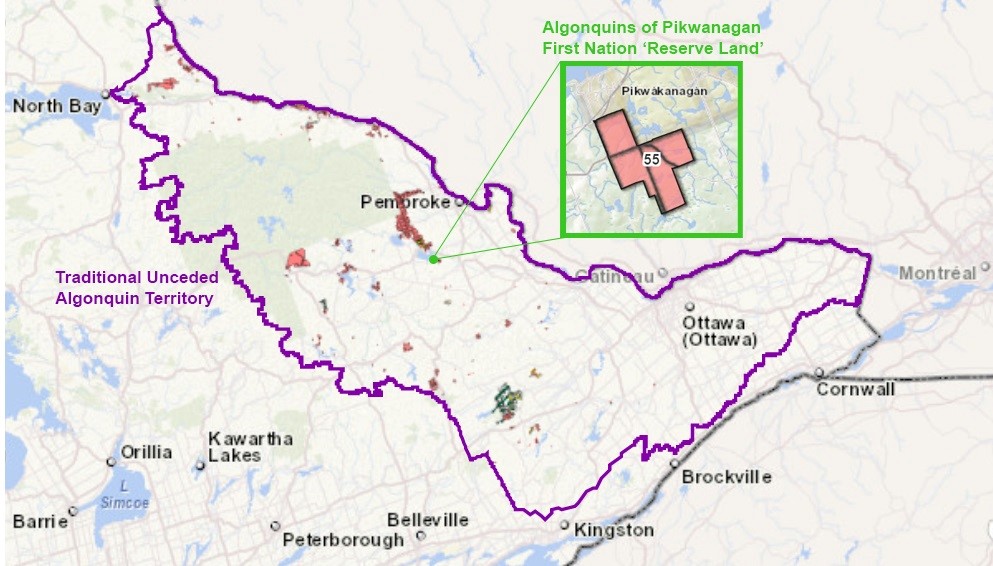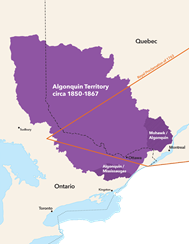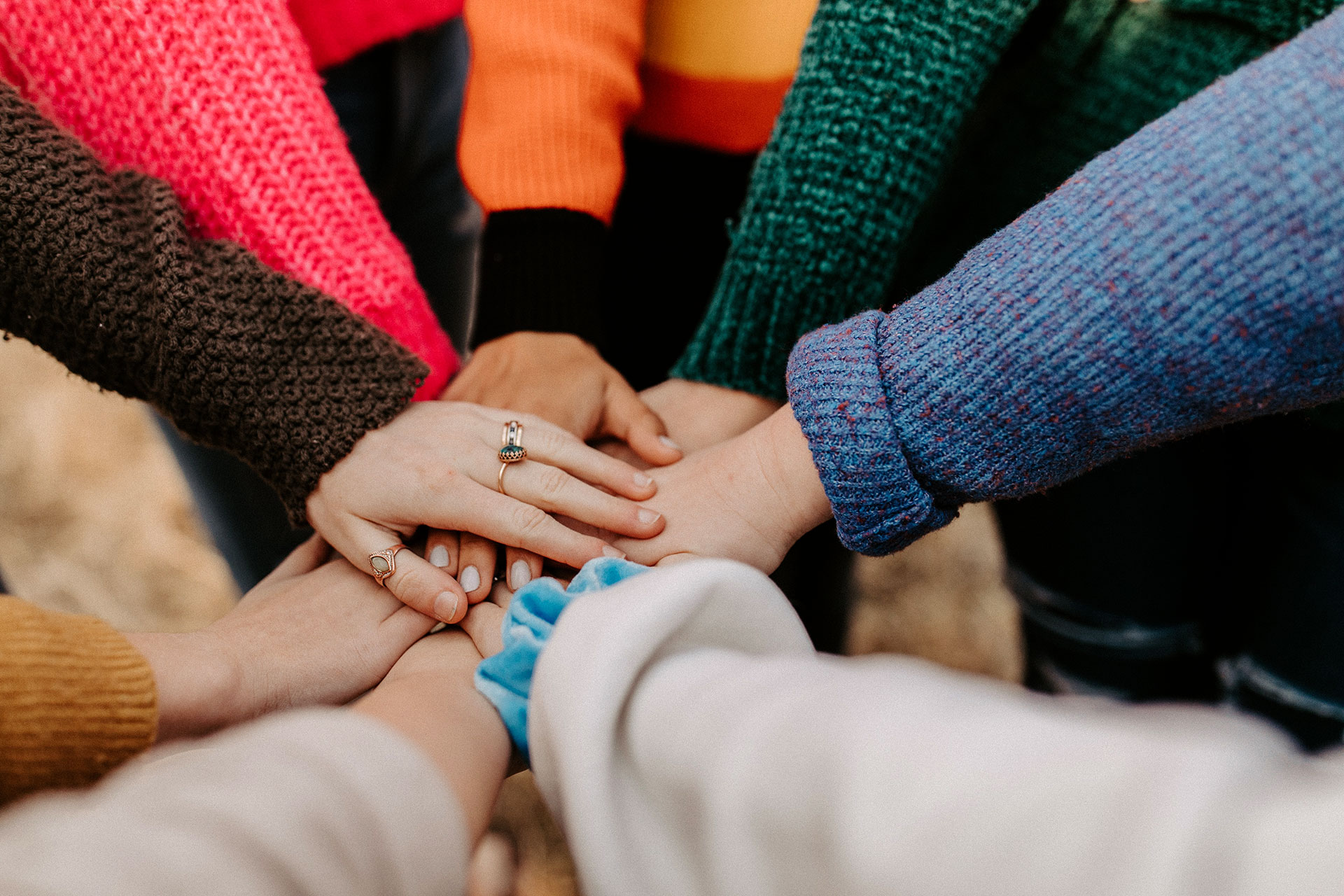The Indigenous People of the Ottawa Valley are Algonquin

0%
Welcome to Algonquin Territory. We hope that you will enjoy living in our territory.
Welcome to Algonquin Territory. Both Canada and Ontario agree with our claim of all the land south of the Ottawa River from just west of Mattawa to just east of Hawkesbury, through the height of land in Algonquin Park to below Hwy 7, as pictured above, which includes all of both Renfrew and Lanark counties. We proclaim occupancy since the glaciers of the last ice age retreated over 12,000 years ago.
Many Algonquin First Nations and peoples claim territory north of the Ottawa River and even in greater Quebec.

Algonquin Nation Territory circa 1850-1867.
This map is provisional. Boundaries are based on results of research to date and may change as discovered (Algonquin Nation Secretariat, 2018).
The Algonquins are part of the greater Anishinabek Nation, which includes most nations in the eastern half of North America, including the, Ojibway, Ottawa (Odawa), Potawatomi, Kickapoo, Menomini, Missisauga, Saulteaux, Waubanaki, Beothuk, Micmac, Passamaquoddy, Penobscot, Wawenock, Malecite, Naskapi, Innu, Delware (Lene Lanape), Nanticoke, Montauk, Wappiner, Nipmuc, Massachuset, Conoy, Pennacook, Nauset, Wampanoag, Pequot, Narraganset, Mohegan, Powhatan, Illinois, (Illiwenabe), Miami, Shawnee, Sauk/Fox, Peoria, Piankashaw. [c/o Nicholas Deleary, Mide Scholar]. It does not include the Iroquois or Haudenosaunee Nations who are a different linguistic/cultural group.
Eligible First Nations people, bands, and band councils of an Ontario First Nations reserve may claim a rebate of the 8% Ontario portion of the HST paid on qualifying goods and services purchased off-reserve. Learn more here.
The Algonquins of Pikwakanagan is the only Reserve in our territory that is recognized by the federal government, even though several other of our Algonquin historical communities petitioned for lands to be set aside in their areas, but all these communities lie outside Renfrew & Lanark counties. Pikwakanagan is also quite isolated from other Reserves in both Ontario and Quebec. Today, the closest First Nations are at least a three-hour drive away; imagine how far away that was in 1885 when our only modes of transportation were by foot or canoe. This contributed greatly to our loss of culture.
While the Reserve is a segregated community, it is only large enough for about 350 of our 2,600 ‘Status’ members to reside. The rest of us live off-reserve. In addition, there are many Indigenous people of Algonquin ancestry without ‘Status’, living within Renfrew and Lanark counties, as well as many other Indigenous people – Metis, Inuit, and other First Nations citizens. The last census counted nearly 8,500 Indigenous people in Renfrew County and over 2,600 in Lanark County. We’re everywhere!
We consider each First Nation in Canada to be a sovereign nation, and we are currently developing our own self-government policies. But for Indigenous issues that fall in the realm of the province, such as education and health, the Algonquins of Pikwakanagan First Nation is represented provincially by the Anishinabek Nation and The Chiefs of Ontario. Federally, Indigenous issues are handled by the Assembly of First Nations. When you review these websites, you’ll see that we have many of the same issues that you have, with employment being a focus. More and more you will see Indigenous Liaison agents appearing in our municipal governments as they realize their need to learn how to work with us, as this Local Immigration Partnership agency is working with you.
Recently, changes were made to the Oath of Citizenship to include in your duties as a Canadian that you would also observe the Treaties made with Indigenous People. Our territory has yet to have a treaty, but it has been in the works for over 30 years. Learn more about historic treaties.
We hope that you will enjoy living in our territory, and that you will appreciate this privilege by developing your own land acknowledgement statement to use whenever you speak to a group in public. You can help to set a standard for historic settlers by identifying who you are, where you are from, why are you here, and how you will work cooperatively with the Indigenous People of Canada.
Aimee Bailey, Algonquin Citizen
Tags: Indigenous, Peoples, Algonquin Territory, Algonquin First Nations, Anishinabek Nation, Algonquins of Pikwakanagan, Indigenous People of Canada
RELATED ARTICLES
| M | T | W | T | F | S | S |
|---|---|---|---|---|---|---|
| 1 | 2 | 3 | 4 | |||
| 5 | 6 | 7 | 8 | 9 | 10 | 11 |
| 12 | 13 | 14 | 15 | 16 | 17 | 18 |
| 19 | 20 | 21 | 22 | 23 | 24 | 25 |
| 26 | 27 | 28 | 29 | 30 | 31 | |
Recent Posts
- Local Immigration Partnership Renfrew and Lanark Counties launch online survey
- CULTURE CONNECT: Local Immigration Partnership and United Way East Ontario secure funding for New Horizons Program
- Pathways – Immigration to Canada
- Almonte resident George Yaremchuk presented with Culture Connector Award
- Inspiring Journey: How an international student from India’s experience in Pembroke is shaping her life and career





Recent Comments